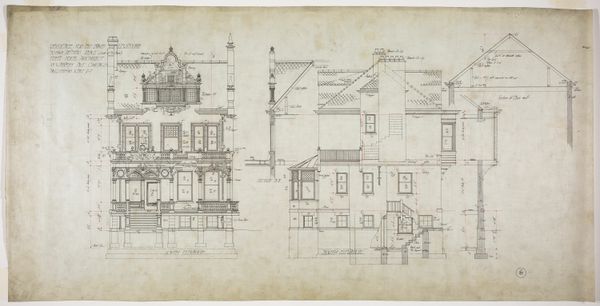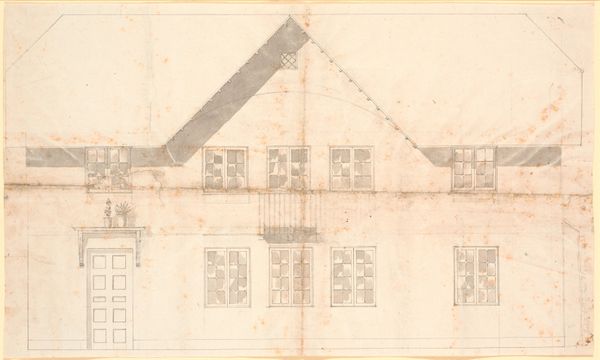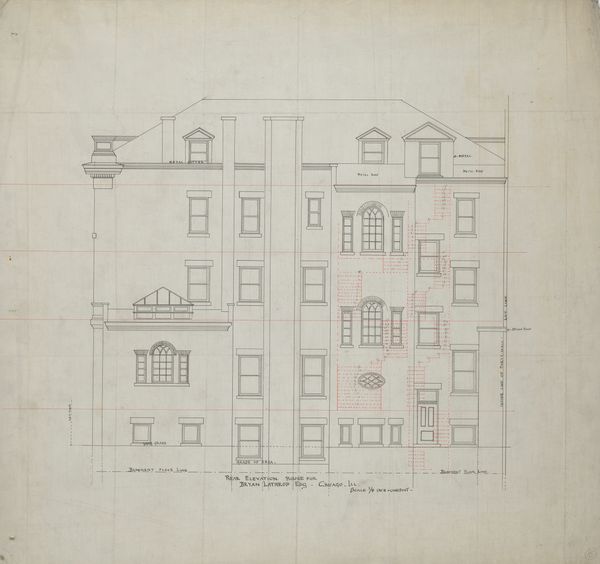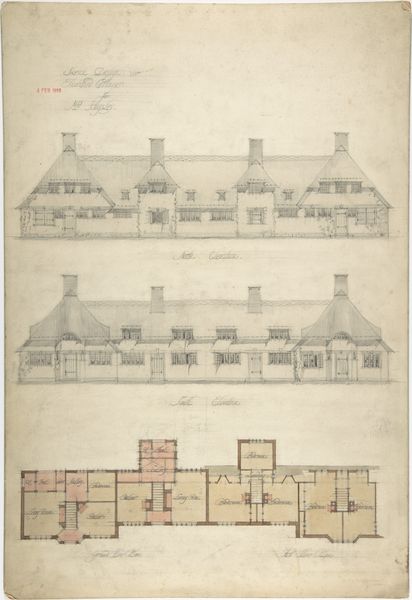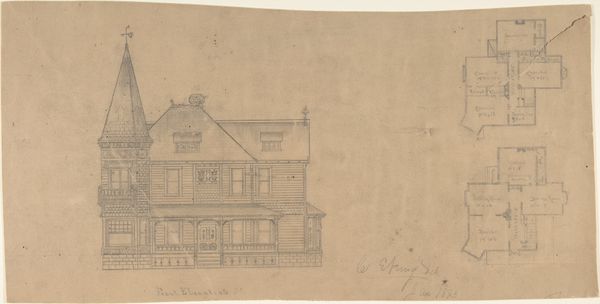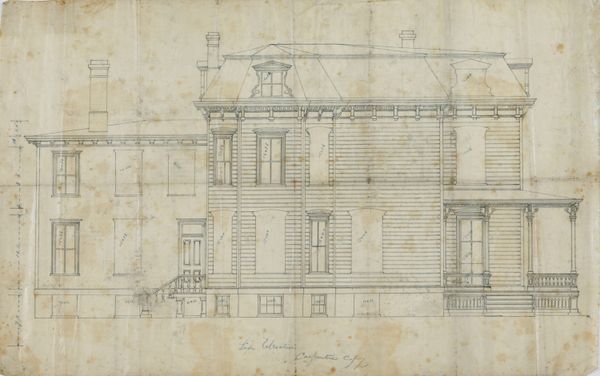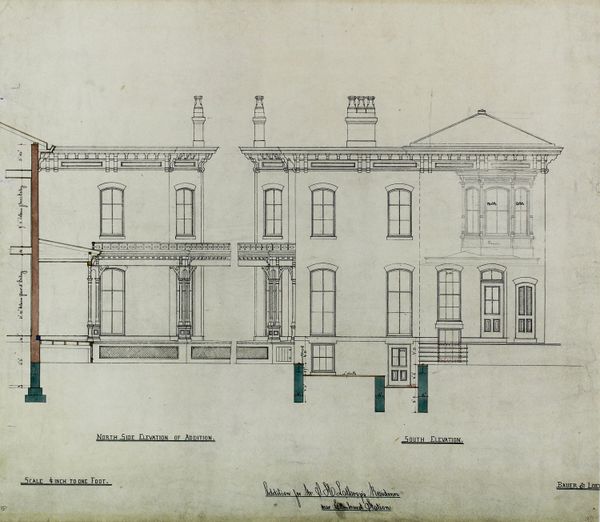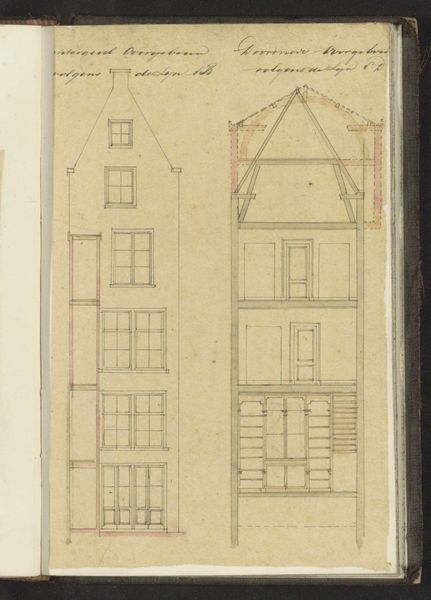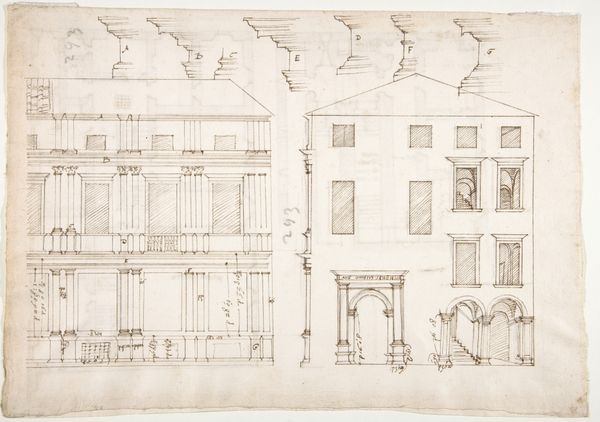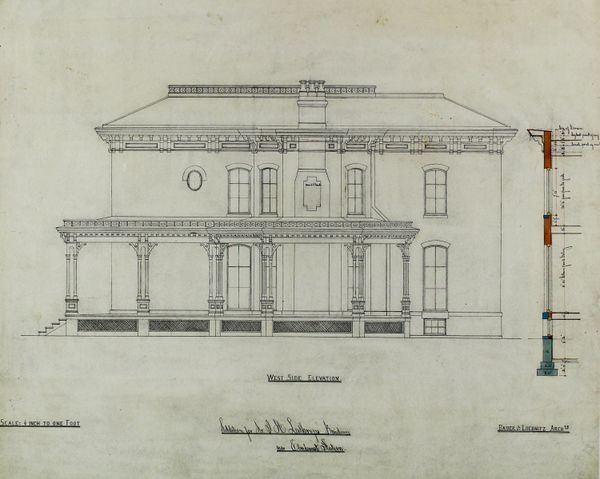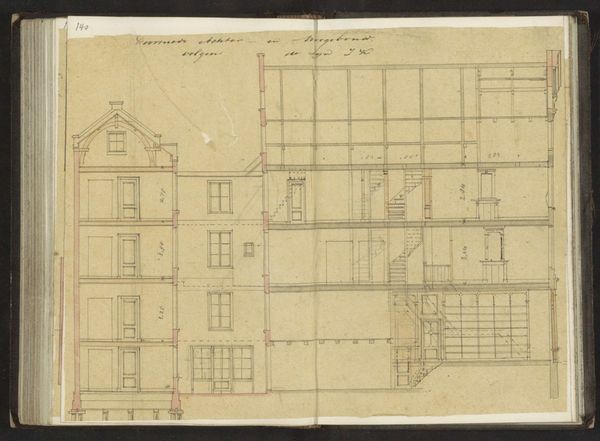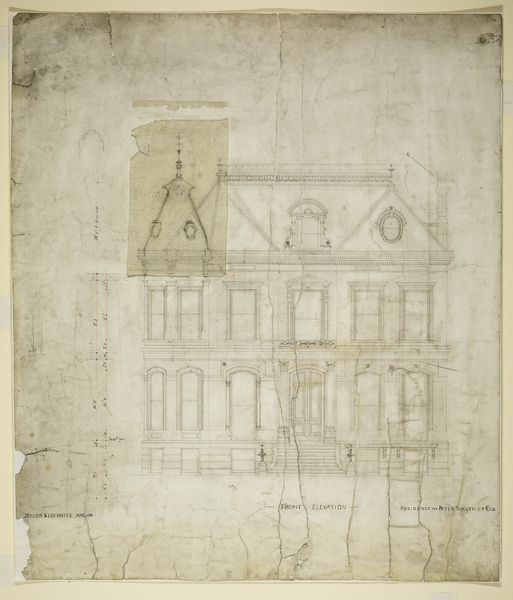
David Lewinsohn House, Chicago, Illinois, East Elevation 1898
0:00
0:00
drawing, pencil, architecture
#
drawing
#
pencil
#
architecture
Dimensions: 46.5 × 91 cm (18 5/16 × 35 13/16 in.)
Copyright: Public Domain
Curator: Here we have a pencil drawing titled "David Lewinsohn House, Chicago, Illinois, East Elevation" created by Fritz Frederick L. Foltz in 1898. It's an architectural drawing, now housed at the Art Institute of Chicago. Editor: Well, first glance? A symphony of precise lines striving for something grand but maybe a bit…rigid? I wonder what the vibe inside was, or would have been. Curator: Indeed. Foltz, while not a household name like Sullivan, contributed significantly to the architectural landscape of Chicago. These meticulous drawings were crucial in realizing ambitious residential projects reflecting the aspirations of the city’s elite during the late 19th century. Editor: It's interesting seeing how that elite lived through the lens of someone trying to serve them—how much are they dreaming versus being realistic. What does the drawing do to soften that hard line between client and creator? Curator: A compelling question. Foltz was capturing a specific aesthetic, popular in certain Chicago neighborhoods. It also shows an understanding of design’s importance to status and the emerging professional role of architecture as distinct from building trades. The client, the Lewinsohn family, were buying not just a home but an image of themselves. Editor: Look at that little turret, though! It hints at something almost fairytale-like. And that conservatory detail in the middle! The pencil seems almost desperate to suggest light there, which is something beyond status, a craving for sunshine in this detailed design. Curator: That could well be true, and it brings up the whole debate about public versus private life. Architecture, then as now, existed where those two collide. These homes became part of the city fabric, but shielded occupants from public gaze. The arrangement of space and window sizes—Foltz is controlling perception from both sides of the wall. Editor: Makes me think what kind of art ended up gracing those walls... Was there tension, do you think, between these precise structures and, let’s say, more liberated, messier forms of expression hung on the walls inside? It's interesting. Maybe that is also an interesting comment on Foltz as artist versus Foltz as someone simply selling a service to wealthy clients. Curator: Absolutely, an interesting collision. Thanks for these thoughts! Editor: You're very welcome!
Comments
No comments
Be the first to comment and join the conversation on the ultimate creative platform.
